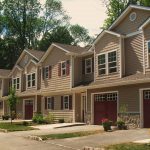The Pandemic induced exodus from cities across the nation has caused home prices to rise sharply. This is but one of the reasons that an increase in the supply of affordable housing must increase and fast. In this case, the word “affordable” describes the inverse relationship between an individual or family’s gross income and the amount it costs to live monthly in a given area.
Suggestions:
Adopt a holistic approach to neighborhood development
Create an initiative that includes all stakeholders, from residents to neighborhood nonprofits and the private sector. This approach should examine a neighborhood’s future, with particular attention paid to commercial revitalization, job creation, improved schools, public safety, transportation, etc.
Allow for the inclusion of “Granny Flats.”
Re-zoning efforts that increase “accessory dwelling units” (ADUs) such as granny flats, garage apartments, carriage houses, and ancillary units create the potential for quickly expanding the total number of affordable housing units. This increase in supply would improve affordability as demand can be dampened, thus driving down costs. ADUs are attractive for developers, as they offer density without creating the appearance of a specific area being overcrowded.
Create Housing Linkages
Local community governments can provide conditional approvals to commercial building developers with clauses requiring the allocation of a certain percentage of their project to provide for a pre-determined amount of affordable housing units. This would apply to both new as well as redeveloped properties. Developers who demolish or convert affordable units could also be required to recoup their losses with at least the same number of replacement units. Finally, density bonus incentives could be offered to developers who agree to build affordable units beyond what they are minimally required.
Property Insurance Relief
As the effects of climate change becoming more pronounced, increases in property insurance have made the creation of affordable homeownership or management even more challenging than they already were. Local governments should acknowledge this fact and provide relief for those adversely affected. In addition, local governments should allow property managers to lower the amounts they charge tenants by using Section 8 vouchers to pay their mortgages.
Encourage the rehab and conversion of broken hotels into affordable workforce housing.
There is a vast supply of closed hotels that may be converted into affordable workforce housing complexes. These broken hotels are often functional, with amenities such as pools, common areas, available spaces for child care, and many other positives that can be modernized. With tax incentives, the result of new affordable workforce housing projects can be tenants who pay in the range of $500-$700 per month to live in conditions that, in some cases, have been reported as resort-like.
Maxwell Drever and his affordable workforce housing platform are getting considerable notice.
Those developers interested in finding out more about the platform described above should Google “Penleigh Branson Row” and read about the work long-time developer Maxwell Drever is achieving in Branson, Missouri.









Pingback: The Benefits of Workforce Housing, with a mention of creative Affordable Workforce Housing solutions by Maxwell Drever | My Beautiful Adventures